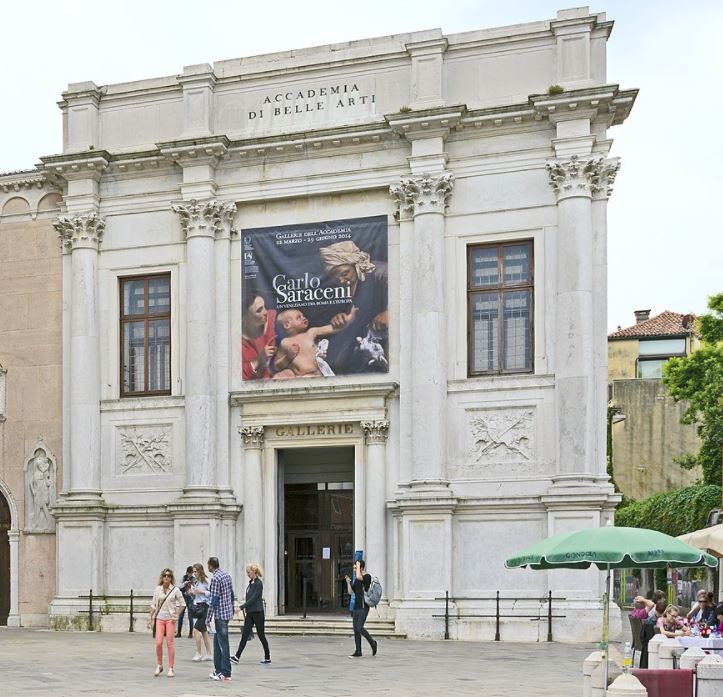The Venetian School of painting produced several of the most renowned Renaissance artists in history in the 16th century.
One of these artists was named Jacopo Robusti (1518-1594), a man is better known by the nickname he got as a little boy, “Tintoretto.”
The nickname that described him best during his painting career was “Il Furioso,” a reference to the incredible pace at which he was able to complete his monumental paintings.
Let’s take a closer look at Saint Mark’s Body Brought to Venice, one of Tintoretto’s ultimate masterpieces for several reasons.
1. The painting was completed in the 1560s
The artistic career of Tintoretto started mysteriously. Some art historians suggest that he was briefly trained by Titian (1488-1576), the other famous Venetian master, but this only lasted a couple of days.
The consensus among art historians is that he was self-thought, a notion that made it relatively harder for him to earn commissions at the start of his career.
He compensated for this by often working for free or for little money, a tactic that served him well. He gradually increased his status as a master in Venice.
He completed Saint Mark’s Body Brought to Venice between 1562 and 1566, a time when he already made a name for himself in his native city.
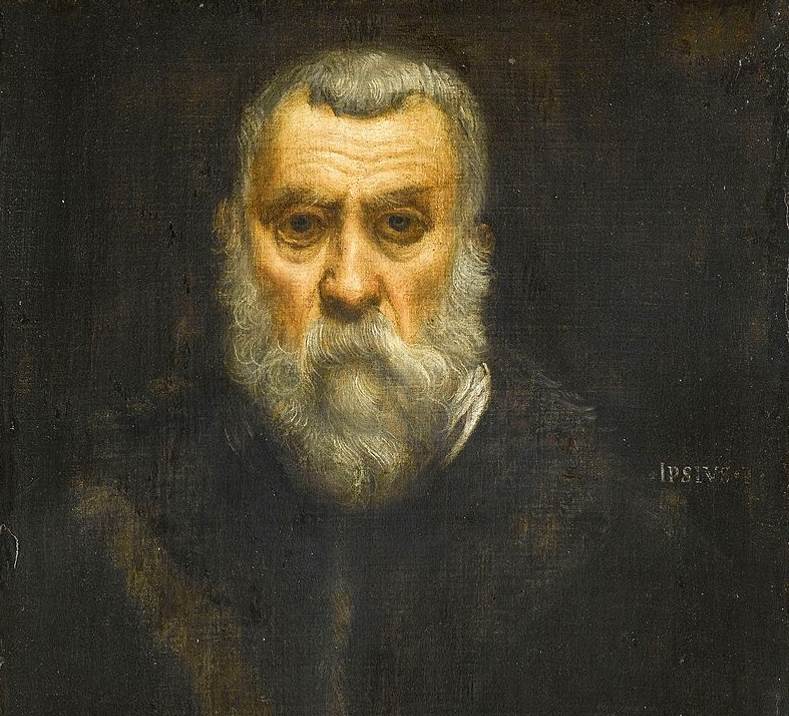
It’s not hard to figure out who the patron saint of this city is. Multiple of Venice’s most famous landmarks are named in honor of Saint Mark.
This includes Saint Mark’s Square, Saint Mark’s Basilica, and Saint Mark’s Campanile, the tallest building in the city.
Saint Mark is also known as Mark the Evangelist and is believed to be the author of the Gospel of Mark. He was born in 12 A.D. and died in Alexandria in the Roman Empire in 68 A.D.
He is credited as being the founder of the episcopal see of Alexandria, one of the five important sees in Early Christianity.
The painting by Tintoretto depicts the dead body of Saint Mark which is being brought to Venice by his followers who are identified as Venetian merchants and two Greek monks.
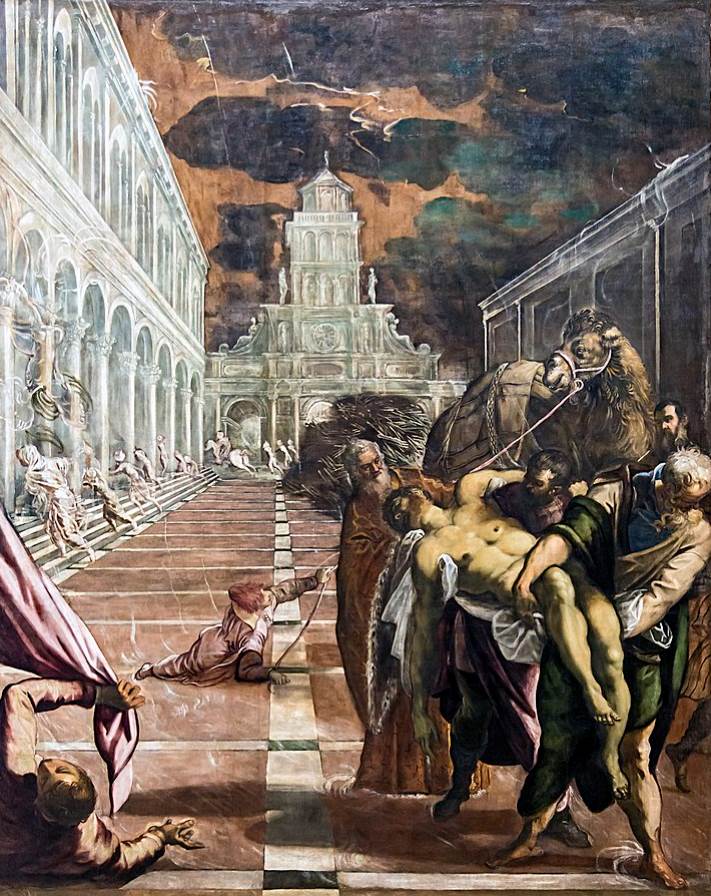
3. It was commissioned to decorate a famous building in Venice
The painting was one of the several paintings related to Saint Mark that was commissioned to decorate the Scuola Grande di San Marco.
This amazing Renaissance building served as the headquarters of the six major confraternities in the city known as the “Scuole Grandi of Venice.”
It was originally constructed in 1260 but completely rebuilt 20 years after a fire had gutted the medieval structure in 1485.
Today, this magnificent building in the northern part of Venice serves as the city’s hospital.
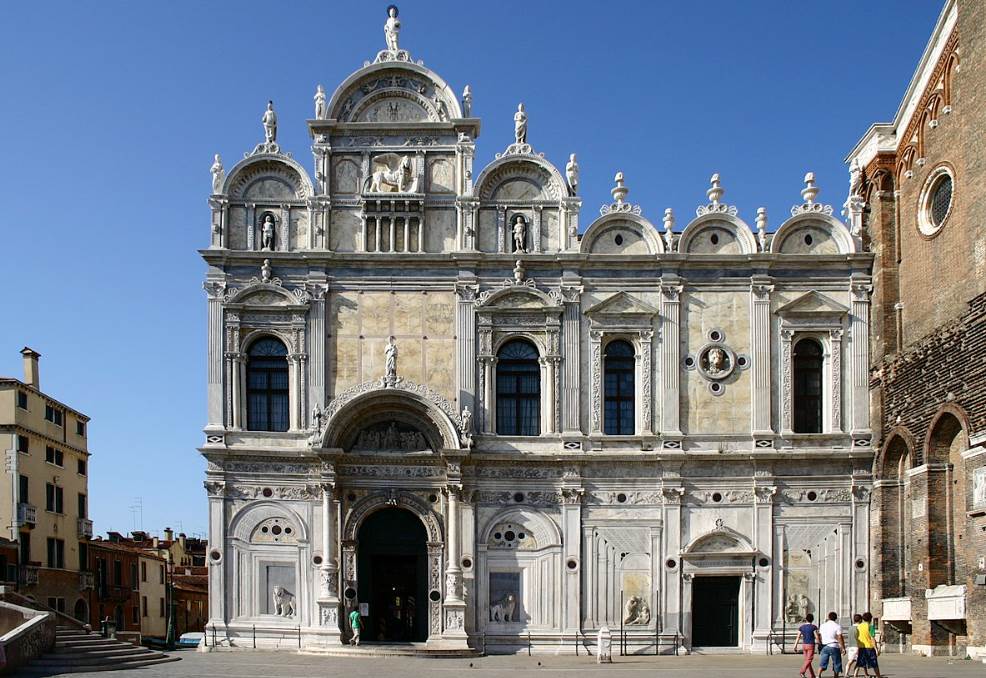
4. Tintortto earned the commission because of one of his early masterpieces
The Guardian Grande of the Scuola Grande di San Marco named Tommaso Rangone as the man who commissioned “Saint Mark’s Body Brought to Venice.”
This was far from being the only work that Tintoretto completed for this important organization in Venice, though. Between 1562 and 1566, he also completed “Saint Mark Saving a Saracen from Shipwreck” and the “Finding of the Body of Saint Mark.”
What’s remarkable is that Tintoretto got his first breakthrough when he was commissioned to paint “Miracle of the Slave” in 1548 for the Scuola Grande di San Marco.
This monumental work of art was greatly admired in Venice and solidified his reputation which culminated in this major commission about 14 years later.
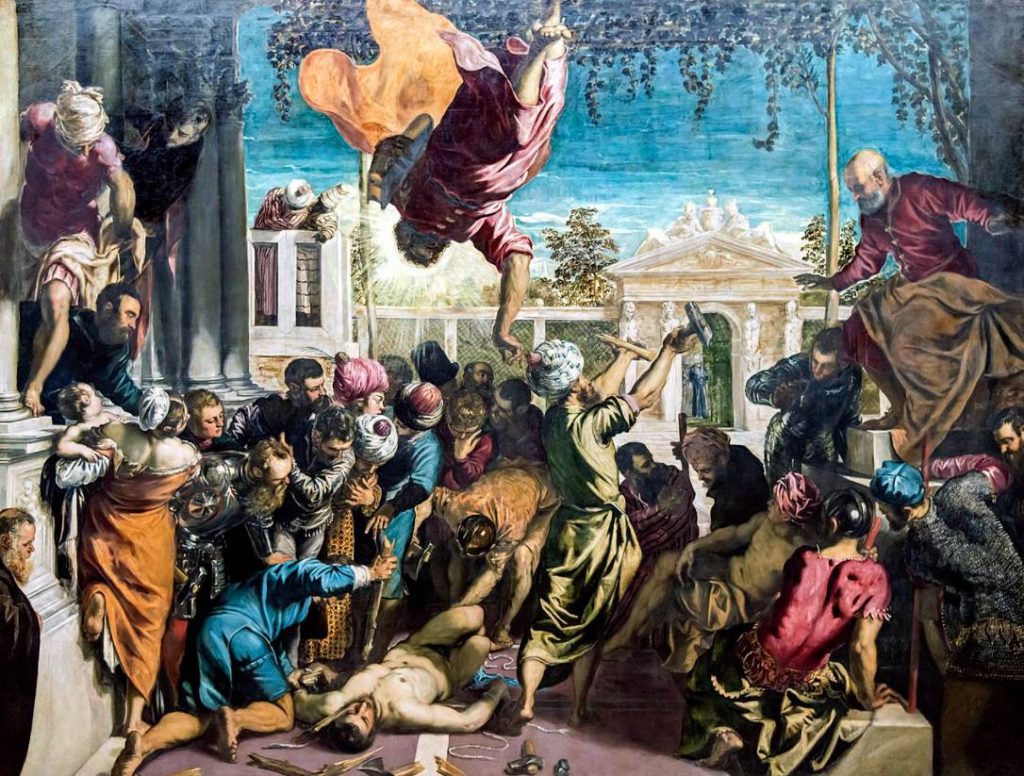
5. The artist included several elements to enhance the dramatic effect
Dark red clouds pack above the Venetian square and buildings. Tintoretto used very thick brushstrokes for the red sky to emphasize the lightning.
The legend told that the people chasing the group of followers who had abducted the body of Saint Mark were scared away by a hailstorm that appears to be brewing in this painting.
The figures in the foreground are visible while the ones n the background are white and almost transparent. Right next to the camel we can see Tintoretto, the bearded man who is closely watching the scene.
The use of perspective in this monumental work of art is remarkable as well, all enhancing the dramatic effect.
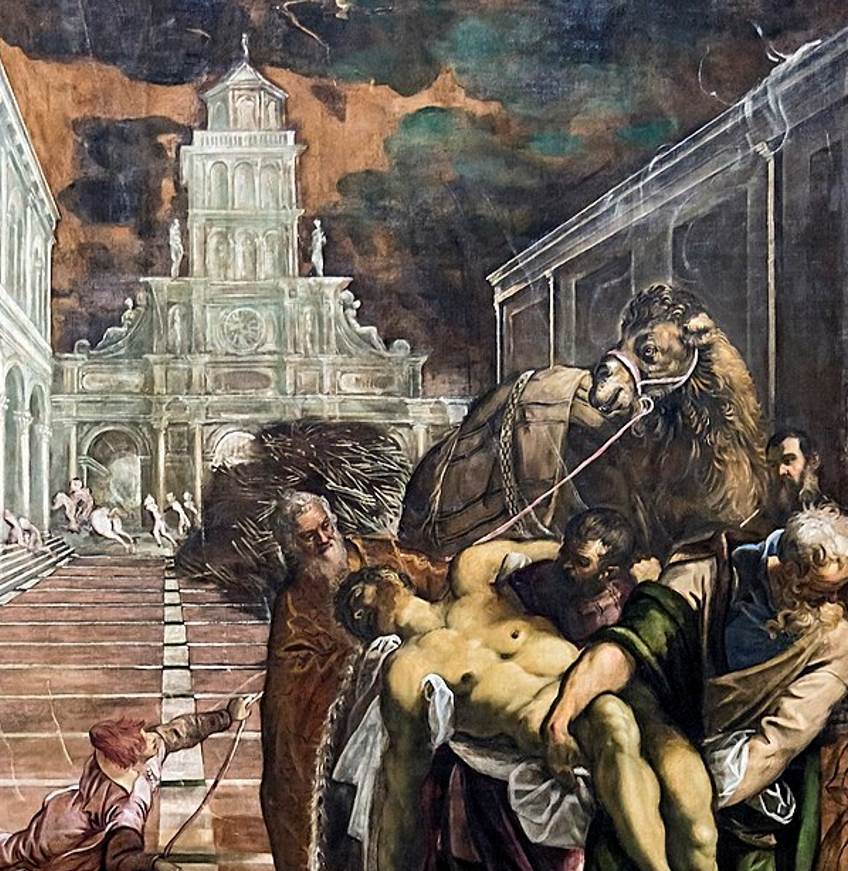
6. It remained in situ until the early 19th century
The Republic of Venice had an extensive history, starting way back in the year 697 and existing well over a millennium until 1797, the year of Napoleon Bonaparte’s invasion.
The painting hung in the chapter hall of the Scuola Grande di San Marco until the year 1807. This was the year that the Scuola was officially terminated.
This means that it decorated this room of the magnificent Renaissance building for over 250 years.
7. How big is Saint Mark’s Body Brought to Venice by Tintoretto?
Following the closure of the Scuola, the painting was moved to the Libreria Sansoviniana. This is a building located at the Piazzetta San Marco, the small extension of Saint Mark’s Square.
It’s here that the painting was partially cut on the left side to fit its new location. This removed part of the man lying in the bottom left corner.
Tintoretto painted fast and hardly produced small paintings. This is an immense oil on canvas painting that has dimensions of 398 × 315 centimeters (157 × 124 inches).
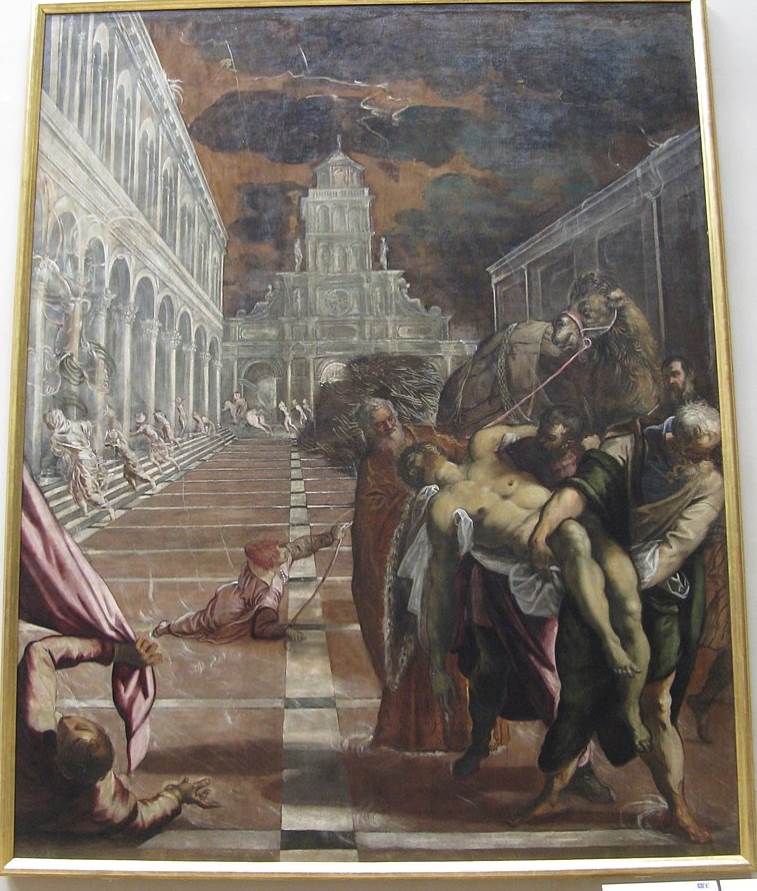
8. Where is the painting located today?
The painting stayed at the library now known as the Biblioteca Nazionale Marciana until the year 1920.
This was the year that it was moved to its current location which is the Gallerie dell’Accademia, one of the most popular museums in the city.
This museum became independent in 1879 as it was originally part of the Accademia di Belle Arti di Venezia. It’s located near the Grand Canal in the southern part of the city.
